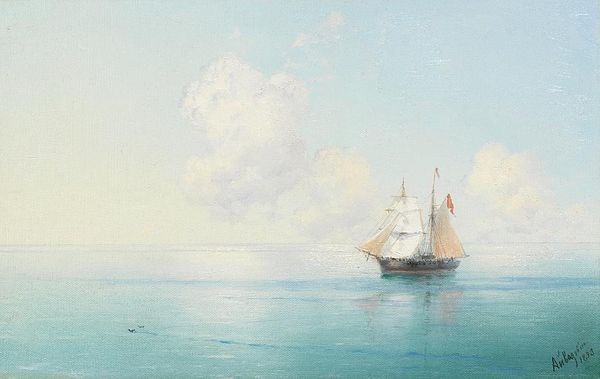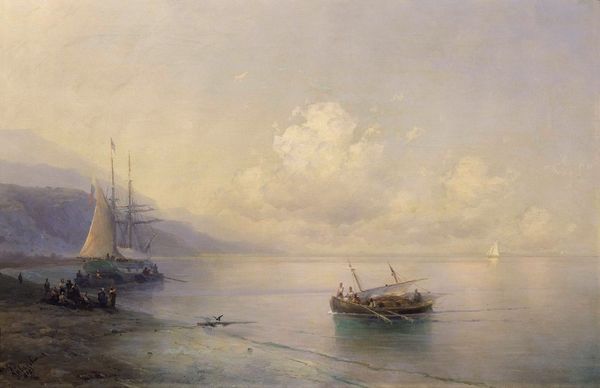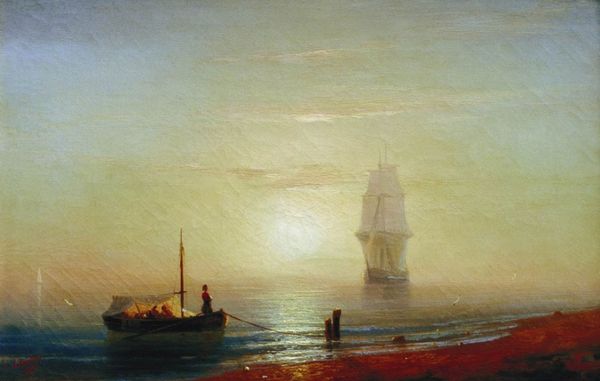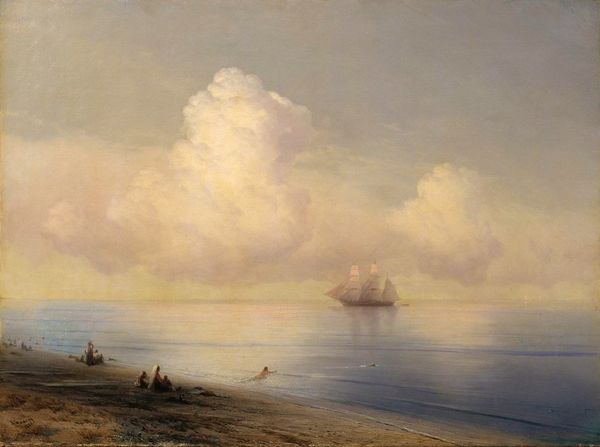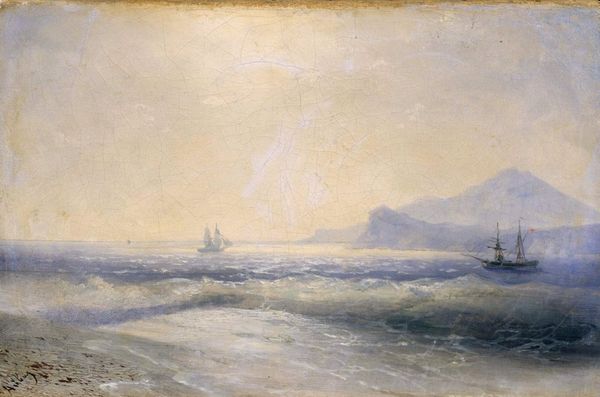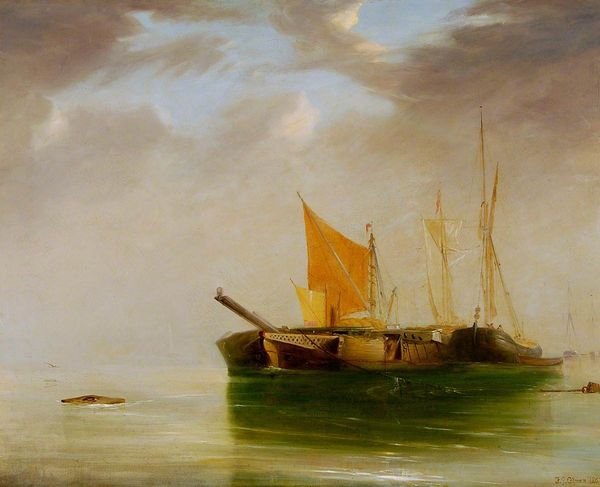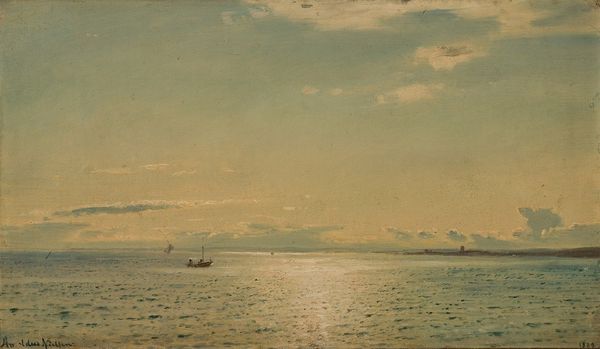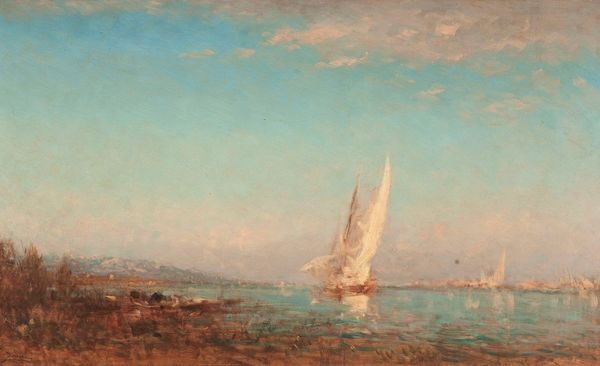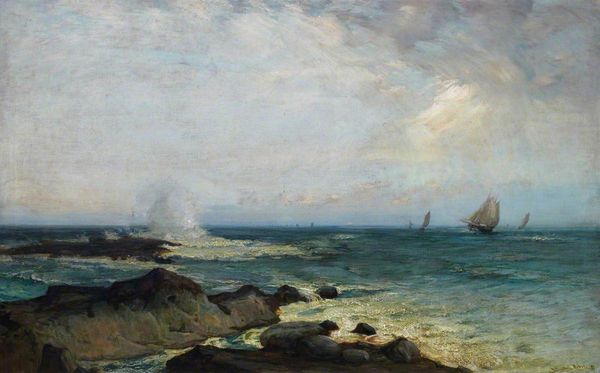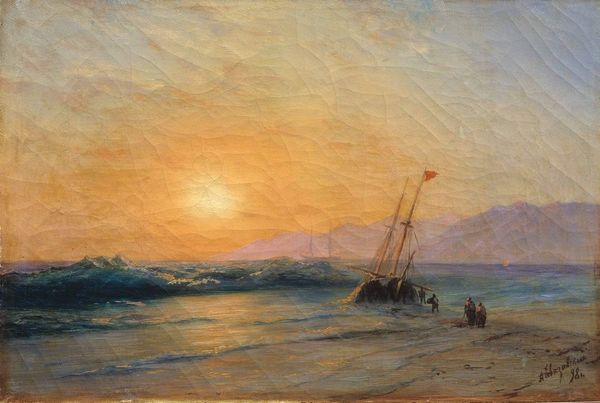
Copyright: Public domain
Curator: Let's delve into this tranquil seascape, "Sea view," rendered in 1899 by Ivan Konstantinovich Aivazovsky. He was a master of marine painting, deeply connected to the cultural and political significance of the sea within the Russian Empire. Editor: The atmosphere is immediately striking. There’s an almost ethereal quality to it – a luminous stillness conveyed through the blending of oil paint and the visible brushstrokes. The subtle gradations in tone...they really make you think about the materiality of light itself, reflecting on water. Curator: Aivazovsky, influenced by Romanticism and Realism, was known for his dramatic seascapes, often portraying naval battles and historical events. While seemingly serene, this piece speaks volumes about Russia’s ambition as a naval power. The ship isn’t merely a vessel, it's a symbol. Editor: I agree. I mean, the sails are furled. It is motionless, isn't it? Yet its presence commands attention, becoming almost sculptural. It emphasizes both labor and the craft— the material realities of seafaring life are apparent. One wonders how Aivazovsky approached this technically? Did he sketch at the shore and recreate this at his studio? Curator: It's suggested he relied on his memory. And indeed, memory shaped his representations of seascapes. His seascapes promoted an image of Russian strength and national identity that went beyond mere realism. His art fed a certain...nationalist fervor. Editor: Indeed, these works are carefully manufactured objects, made with distinct agendas in mind. One can certainly argue the labor involved in image-making itself deserves just as much attention, particularly when those images served political means, or bolstered a public persona. Curator: So while this work, “Sea view,” on the surface shows only the serenity of a seascape, its creation and promotion reinforced key values in late 19th century Russian society. It is history itself painted on canvas. Editor: Leaving us much to reflect upon today, on what is visible, and what lies beneath the surface in the ways images are made, and their multiple social, historical meanings.
Comments
No comments
Be the first to comment and join the conversation on the ultimate creative platform.

